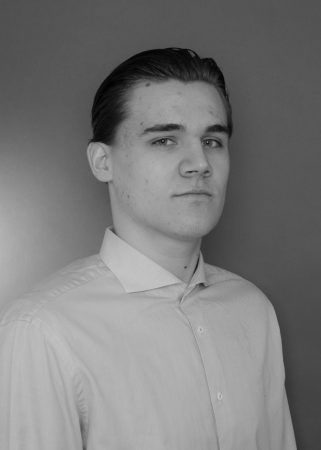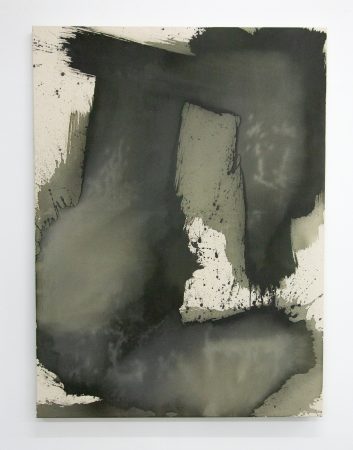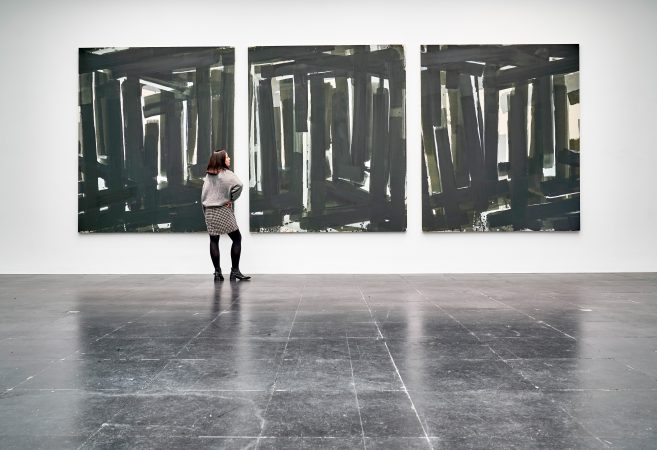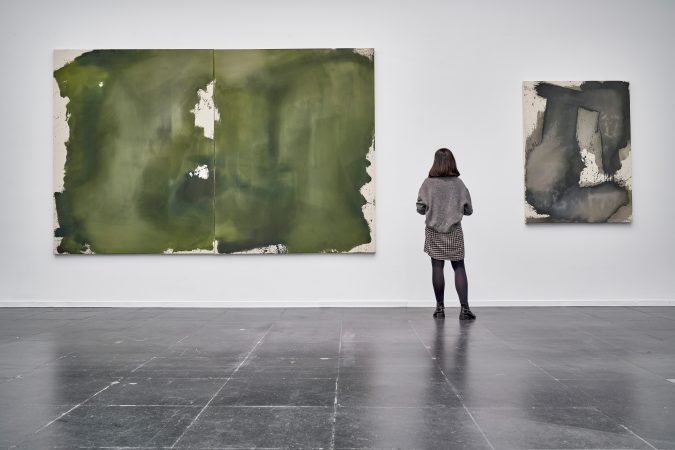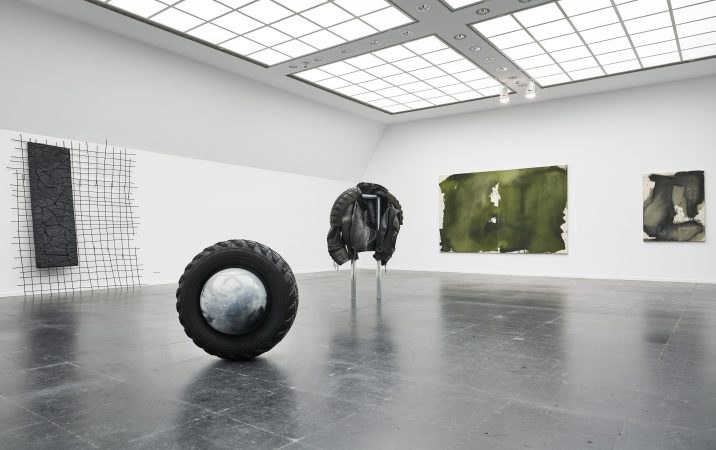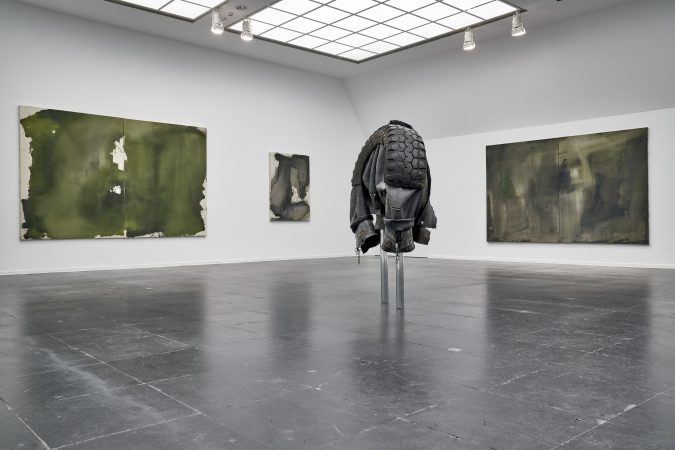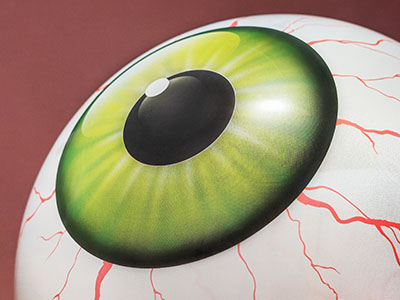Christian Leicher
Christian Leicher creates abstract canvases that are the result of complex compositions of systems and sequences. A tangible depth seems to emerge in his works through painting techniques alone, which consist of various methodical approaches. Christian Leicher superimposes reduced conditions and limitations onto his painterly practice to explore the systems and restrictions of the individual gesture.
Christian Leicher’s painting process is a complex game based on the different conditions of the materials he uses. His color palette is highly limited. Composition and form are in the foreground of his large-format works. He expands the pictorial spaces from individual canvases to diptychs and triptychs, either forming them with sharply defined and contrasting brushstrokes, or extending them as paint smears of varying thicknesses on the canvas.
Intricately constructed drawings that form a spatial code of successive levels and surfaces serve as the basis for his painting. He decides the order of strokes and lines in minute detail and follows this predetermined concept when developing the canvas. This architecture of linear forms is the basis for the composition of the large-format canvases, which manage to open up deep spaces through overlapping surfaces and broad brushstrokes.
By diluting or thickening the black acrylic paint, he enables spatial relationships in his canvases. The material consistency varies between density and transparency, creating different textures. The paint is applied to the canvases as they are lying on the floor. Christian Leicher’s only tool is a ceiling brush. This industrially manufactured object, which is always produced in the same dimensions and used in non-artistic contexts, defines the spectrum of design possibilities. Christian Leicher uses the limitations created by his materials to seek out the hidden and subtle means of individual expression within. His works challenge the precarious balancing act of our viewing process. They examine the conditions in which abstractions are able to create perspective depths and imaginary openings in the eyes of the viewer.
(Text: Franziska Nori, Dennis Brzek)

